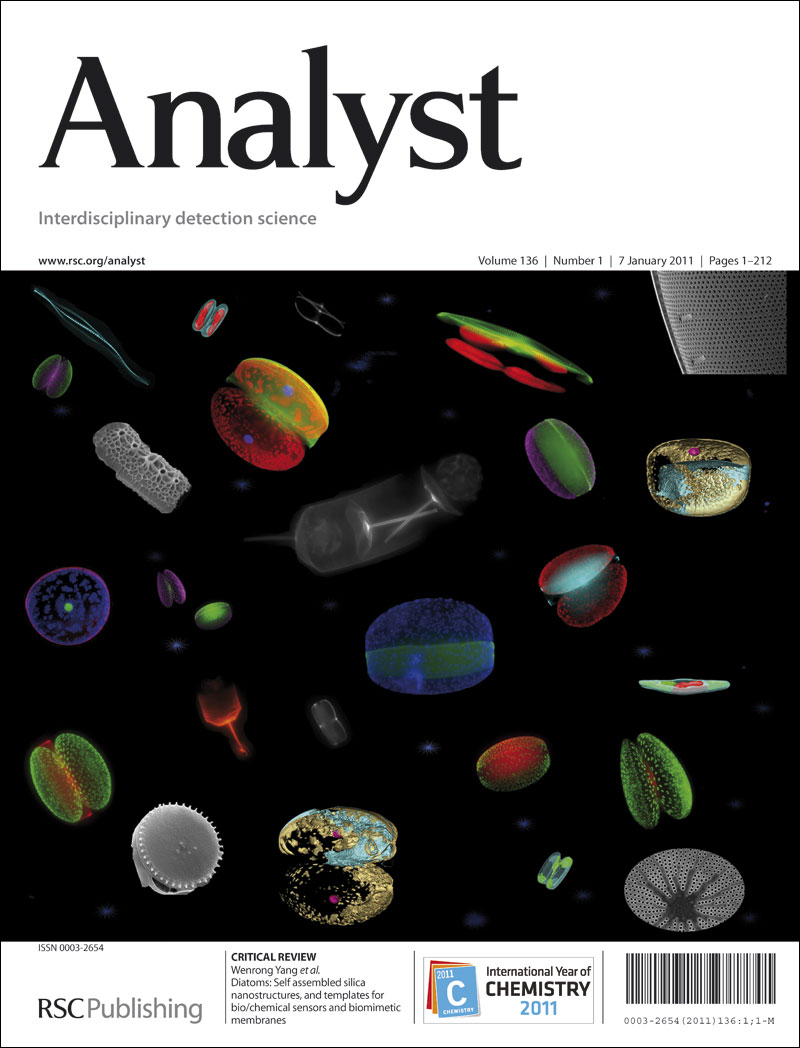细胞内NADH的电化学研究:PASHs对线粒体功能的影响
IF 3.3
3区 化学
Q2 CHEMISTRY, ANALYTICAL
引用次数: 0
摘要
烟酰胺腺嘌呤二核苷酸(Nicotinamide adenine dinucleotide, NADH)是一种重要的生物分子,在许多生物催化反应中是必不可少的辅助因子,也是线粒体功能和细胞生理的关键调节因子。本研究开发了一个利用双介质系统的SECM平台,用于在单个活细胞水平上实时、原位、无创地检测细胞内NADH。该系统使用1-甲氧基-5-甲基吩肼甲基硫酸酯(mPMS),它渗透细胞膜氧化细胞内的NADH,而铁氰化物([Fe(CN)₆]³)将电子从还原的mPMS传送到SECM尖端。应用该方法研究了多环芳香族硫杂环(PASHs)对人肝癌(HepG2)细胞线粒体损伤的影响。代谢反应通过分析聚腺苷核糖聚合酶(PARP)活性、三磷酸腺苷(ATP)含量和线粒体膜电位(MMP)得到证实。结果表明,二苯并噻吩(DBT)激活了PARP,导致NADH和ATP严重耗损,MMP显著下降,从而证实了全面的线粒体功能障碍。与非硫类似物芴(Flu)的比较分析表明,DBT结构中的硫原子是其增强细胞毒性的关键决定因素。本研究为评估环境污染物对亚细胞代谢的影响建立了一种可靠、创新的分析方法,为深入研究细胞毒性机制提供了新的平台。本文章由计算机程序翻译,如有差异,请以英文原文为准。
Electrochemical Investigation of Intracellular NADH: PASHs Effect on Mitochondrial Function
Nicotinamide adenine dinucleotide (NADH) is a crucial biomolecule that serves as an essential cofactor in numerous biocatalytic reactions and a pivotal regulator of mitochondrial function and cellular physiology. This study developed a SECM platform utilizing a double-mediator system for the real-time, in situ, and non-invasive detection of intracellular NADH at the single living cell level. The system employs 1-methoxy-5-methylphenazinium methyl sulfate (mPMS), which permeates the cell membrane to oxidize intracellular NADH, and ferricyanide ([Fe(CN)₆]³⁻), which shuttles electrons from the reduced mPMS to the SECM tip. This methodology was applied to investigate mitochondrial impairment in human hepatoma (HepG2) cells induced by polycyclic aromatic sulfur heterocycles (PASHs). The metabolic response was corroborated by analyzing poly(ADP-ribose) polymerase (PARP) activity, adenosine triphosphate (ATP) content, and mitochondrial membrane potential (MMP). Results demonstrated that exposure to dibenzothiophene (DBT) activated PARP, leading to severe depletion of NADH and ATP and a significant decline in MMP, thereby confirming comprehensive mitochondrial dysfunction. Comparative analysis with its non-sulfur analog fluorene (Flu) revealed that the sulfur atom in DBT's structure is a critical determinant of its enhanced cytotoxicity. This work establishes a reliable and innovative analytical approach for assessing the subcellular metabolic effects of environmental pollutants, providing a new platform for in-depth cytotoxicity mechanistic studies.
求助全文
通过发布文献求助,成功后即可免费获取论文全文。
去求助
来源期刊

Analyst
化学-分析化学
CiteScore
7.80
自引率
4.80%
发文量
636
审稿时长
1.9 months
期刊介绍:
"Analyst" journal is the home of premier fundamental discoveries, inventions and applications in the analytical and bioanalytical sciences.
 求助内容:
求助内容: 应助结果提醒方式:
应助结果提醒方式:


